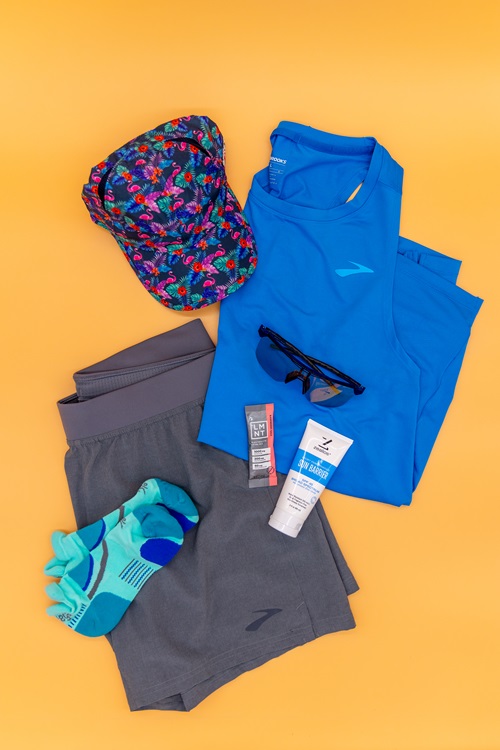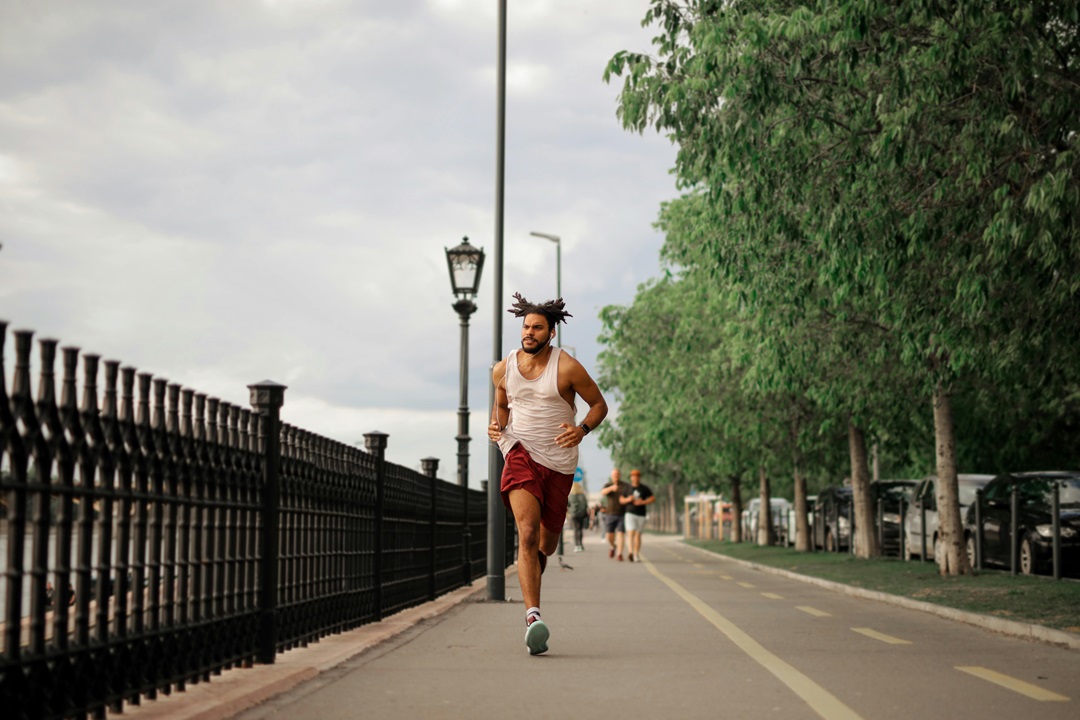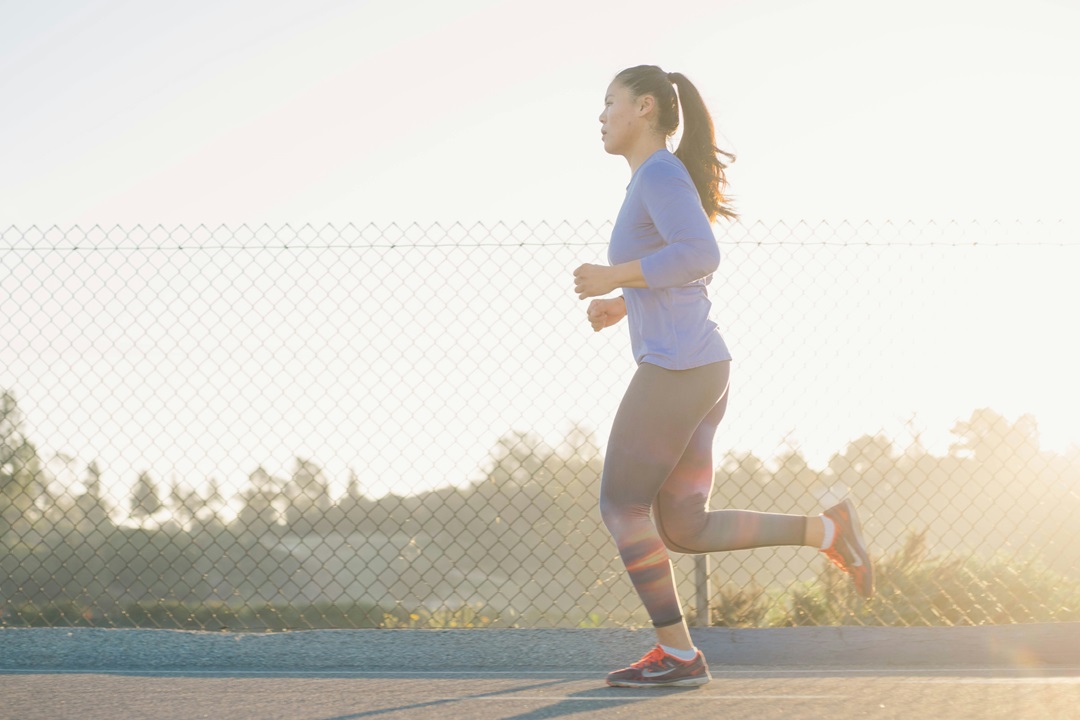Newsflash: It’s hot out. Hell, I’m hot right now writing this. But that doesn’t mean you should hole up in your home, crank up the AC, and ride out the next few months in the fetal position. Or, almost as bad, spend them on a treadmill in your basement. No, you gotta get out and run. And there are ways to keep the summer inferno at bay. Clothing can help. “Keep it light, keep it technical,” advises Brandi Barbre, the running club manager at Fleet Feet in St. Louis and Springfield, Missouri.
Which clothes work best? Let’s start at the bottom and work our way up. For socks, consider Balega’s UltraGlide No Show ($18, balega.com). They’re light yet cushiony, and their moisture-wicking yarn will help keep your feet dry and blister-free. For shorts and tops, you can’t go wrong with Brooks. The Brooks Sherpa 5” Short ($64, brooksrunning.com) is a fan favorite that’s ideal for sweltering runs, complete with a sweat-wicking liner to prevent chafing (you don’t want that!), a bungee loop for your keys, and a bounce-reducing zipper pocket in back for your phone. Meanwhile, the ultra-light Brooks Atmosphere Singlet 2.0 ($40) has performance fabric that pushes sweat away from your skin and takes less than seven minutes to feel dry.

As temps climb, reach for these products to stay cool on the track, road, and trail. (Natalie Rolwes)
In terms of accessories, you’ll want to slather on sunscreen — try the SPF 45 Zealios Sport Performance Sun Barrier ($18, teamzealios.com) — and hydrate post-run with a beverage like the LMNT Electrolyte Drink Mix ($45 for 30, drinklmnt.com). Want sunglasses? Take a look at the Julbo Frequency ($230, julbo.us). They’re lightweight yet secure, and the lenses become lighter or darker based on how much UV light you’re encountering. To finish things off, grab a Sprints Running Hat ($32, getsprints.com), which has a built-in sweatband. Don’t worry if the design is a bit loud. You’re running in hot weather — you’ve earned the right to look a little goofy.

Training in hot weather can pay performance dividends — provided you approach it correctly. (Andrea Piacquadio)
More Ways to Beat the Heat
Looking to remain (somewhat) frosty this summer but still get your miles in? Follow these additional tips from Barbre.
Start slowly.
When you train in the heat, your core temperature rises. But over time, your body adjusts. “It takes about 10 to 14 days for your body to acclimate to heat training,” said Barbre. During this period, omit harder workouts or two-a-day sessions. Instead, go for easy, breezy jogs. “Our bodies are clever, they adapt,” noted Barbre. “But it takes a little time.”
Hydrate (and douse).
Consuming water helps stabilize your core temperature (also known as thermoregulation), so you’ll want to drink lots of it before and during workouts. Barbre recommends running with a handheld water bottle or taking water breaks. Afterward, keep hydrating — either with water or an electrolyte-filled drink. Even dumping water on your head or body helps: It cools you off and improves the evaporation process.
Avoid cotton.
It may be the fabric of our lives, but it shouldn’t be the fabric of your summer runs. “At Fleet Feet, we say cotton is rotten,” said Barbre. “It holds onto the moisture instead of pushing it away from the body.” Instead, choose moisture-wicking, technical fabrics designed to pull the sweat away from your skin. (See above for a few ideas.) Essentially, you want lightweight, breathable gear that dries quickly and won’t weigh you down.
Trust the process.
New research shows that training in heat has similar effects to training at altitude — effects like improved power output and increased VO2 max (aerobic capacity). So, after you’ve adjusted to the hot weather, don’t shy away from it. Rather, lean into it, because it can be beneficial. “I tell my elite athletes, be smart but be repetitive in these conditions,” said Barbre. “If you do, then when the heat goes away, your performance will go up.”
Author: Shawn Donnelly is the managing editor of Terrain Magazine.
Top image: Andrew Tanglao.


Leave A Comment